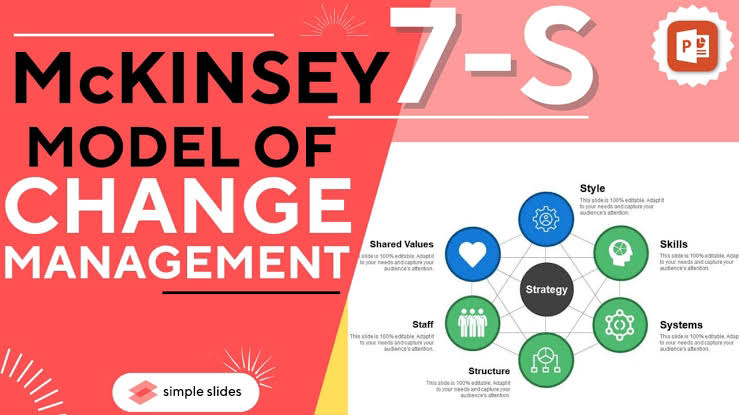Change management is a critical process for organizations adapting to evolving markets, technologies, and customer demands. The McKinsey 7S Framework provides a structured approach to analyzing and implementing change effectively. Developed by McKinsey & Company consultants Tom Peters, Robert Waterman, and Julien Phillips in the late 1970s, this model is a holistic tool that aligns an organization’s internal elements to achieve desired outcomes.
What is the McKinsey 7S Framework?
The McKinsey 7S Framework identifies seven interdependent elements that influence organizational success. These elements are divided into hard elements and soft elements:
1. Hard Elements: Strategy, Structure, Systems
2. Soft Elements: Shared Values, Skills, Style, Staff
The framework posits that for an organization to function effectively, these seven elements must be aligned and mutually reinforcing.
---
The Seven Elements in Detail
1. Strategy
Refers to the organization’s long-term plan to achieve competitive advantage.
A well-defined strategy is crucial during change management, ensuring all actions align with the overarching goals.
Example: If a bank plans to adopt digital services, the strategy must outline steps to integrate technology while maintaining customer trust.
2. Structure
The organizational hierarchy and reporting relationships.
Change often requires restructuring to optimize workflows and enhance efficiency.
Example: Flattening hierarchies to improve decision-making speed in a fast-changing tech industry.
3. Systems
The processes and technologies that drive day-to-day operations.
Adjusting systems during change ensures smooth operations and supports new initiatives.
Example: Implementing a CRM system to improve customer engagement in retail banking.
4. Shared Values
The core principles and culture that bind the organization.
Shared values guide employee behavior and decision-making, acting as a foundation for change.
Example: A focus on sustainability becoming a shared value in an organization transitioning to eco-friendly practices.
5. Skills
The competencies and capabilities of the workforce.
Identifying skill gaps and training employees is essential during transformation.
Example: Upskilling employees to use AI tools in a manufacturing setup.
6. Style
Leadership and management styles that influence the organizational climate.
A leadership style that fosters collaboration and openness is critical during transitions.
Example: Transformational leadership driving innovation during market disruptions.
7. Staff
The people within the organization and their roles.
Effective change management requires ensuring the right people are in the right positions.
Example: Hiring data analysts to support a company's data-driven strategy.
---
Applying the McKinsey 7S Framework to Change Management
1. Assessment of Current State: Analyze the existing alignment of the seven elements. Identify discrepancies that hinder change.
2. Define the Desired State: Establish the ideal alignment required to achieve organizational goals.
3. Identify Gaps and Develop Action Plans: Create strategies to bridge the gaps between the current and desired states.
4. Implementation: Execute changes while monitoring the impact on all elements.
5. Continuous Review: Regularly reassess and adjust to maintain alignment.
---
Benefits of the McKinsey 7S Framework
1. Holistic Perspective: Considers both tangible and intangible factors affecting change.
2. Flexibility: Applicable across industries and types of change.
3. Alignment Focus: Ensures all aspects of the organization work cohesively toward goals.
---
Challenges in Using the 7S Framework
1. Complexity: Requires thorough analysis and a deep understanding of organizational dynamics.
2. Interdependencies: Changes in one element can have unpredictable effects on others.
3. Time-Consuming: Detailed evaluations can be resource-intensive.
---
Conclusion
The McKinsey 7S Framework is a powerful tool for managing change in complex organizational environments. By addressing both hard and soft elements, it ensures a balanced approach that fosters sustainable transformation. Organizations that leverage this framework can navigate change effectively, ensuring long-term success in a rapidly evolving business landscape.

No comments:
Post a Comment